

The Untold Truth Of 3D-Printed Houses
source link: https://www.slashgear.com/1029727/the-untold-truth-of-3d-printed-houses/
Go to the source link to view the article. You can view the picture content, updated content and better typesetting reading experience. If the link is broken, please click the button below to view the snapshot at that time.

The Untold Truth Of 3D-Printed Houses
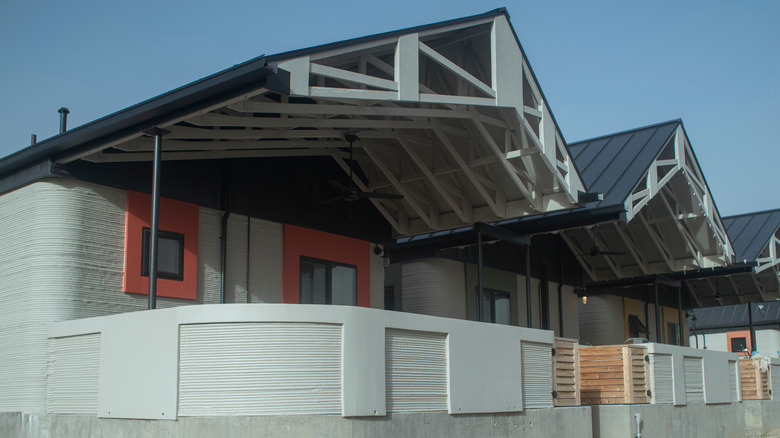
3D-printed houses seem poised to be the next revolution in home construction. Utilizing 3D-printing technology on a grand scale like that needed to craft houses unleashes design potential and removes many barriers to traditional construction materials and methods presented. The basics of 3D printing are exactly the same as the machine that sits on a desk creating chess pieces, only it is fed cement and is literally the size of a house. Some clever designs have come out recently and several companies are working to spread house printing worldwide.
Consider what goes into building a house. A contractor's team of workers must measure, cut, and assemble lumber beams one by one until a house is framed, only to be followed by insulation and drywall. The next step is trimming, weatherproofing, and so on until the house is complete. This requires a lot of time, materials, and workers. With 3D printing, a large machine lays a narrow line of concrete over a pre-determined path and repeats itself in rows, building height each time. It is amazingly simple and stronger than wood. Once the printer is done, the only thing left to do is add a roof, windows, and doors. This technology is just now catching on and is not widely known, so here are a few of the untold truths behind this method of home construction.
The tech is older than you might think
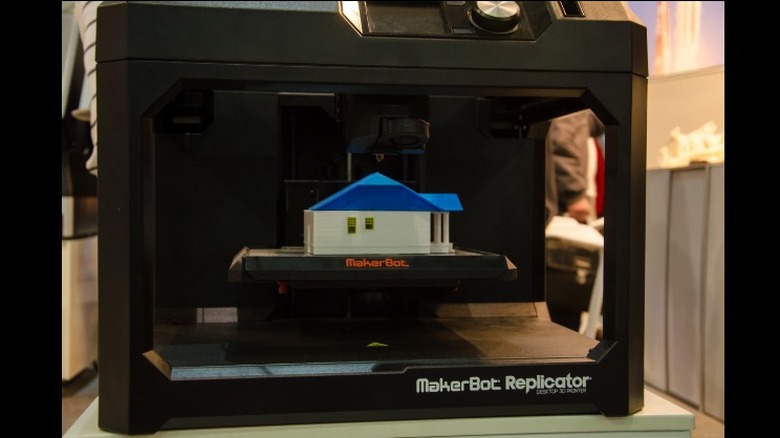
While compact 3D printers have proliferated in the last few years with seemingly everyone able to create whatever they want at home, the technology has been around for a while. Some of the first patents for what would become 3D printers were filed in the '70s. Stereolithography, the method that makes 3D printing possible, was patented in 1984, and the first device to use it was created in 1987. It was in the '90s that advances in medical and industrial applications saw significant gains that would ultimately lead to widespread adoption. In 2006, the Makerbot arrived and set off a technology revolution in DIY 3D printing and the proliferation of the technology to everyone (via Redshift).
Since then, individuals and companies have been pushing the technology in new directions, figuring out ways to use new materials to create an ever-growing list of objects not possible without mass production just a decade before. This includes scaling up the printer to the size of a house. According to House Beautiful, Habitat for Humanity announced in January 2022 that the first owner-occupied house built with 3D printing will be available to a family in Virginia. Habitat, a charity that builds homes for low-income families, is energetic about the possibility of continuing to use 3D printing to help more families around the nation. Things are just beginning for the 3D printed home.
Printed homes are built fast
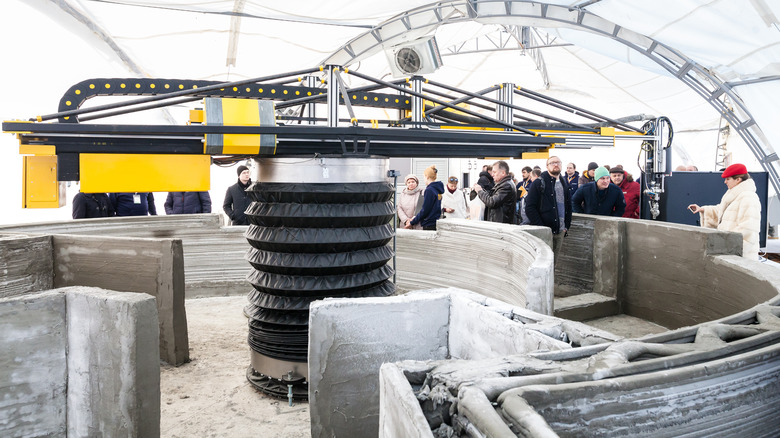
Realtor.com states that the average time to build a home in the U.S. is about seven months, from permit approval to final inspection. Furthermore, location can play a difference with homes in the Northeast taking up to three months longer. One of the major promises of 3D printing is the reduced time of construction. Big Think reported that the Habitat house printed portion was completed in just 28 hours. It cuts down the time needed to frame, hang drywall, and trim the house to just over one day. With the finishing touches of installing windows, doors, and other tasks, construction time should be cut from seven months to less than one.
A New York company called S-Squared 3D Printers claims that it is capable of building a modest-sized 1,900 sq. ft. home in just eight days from start to finish. Of that time, only 48 hours were used for the printing portion of the build. With huge deficits of affordable homes in this country, 3D printing could help alleviate housing problems and ease pressure on rising rents at the same time.
Low-cost construction
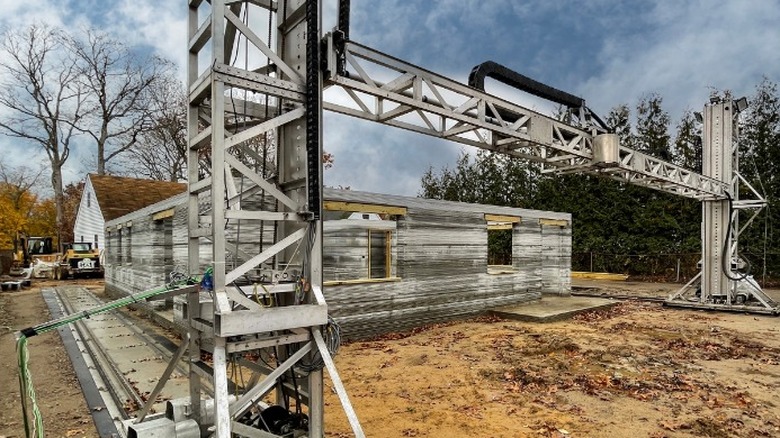
Building houses with a printer reduces not only the raw materials needed to create the structure but also the workers needed. The most strenuous part of the project is setting up the printer, which is a large and complex assembly. When it is set up and in place, the machine does most of the work with only a couple of workers to monitor the progress. Austin-based Icon is going all-in on 3D printed houses, having already built a 350 sq. ft. prototype house in Austin with its patented printing system. According to Insider, Icon says that their Austin house, which was built in 48 hours, cost about $10,000, but that they expect to be able to get it down to $4,000 going forward while increasing the size and reducing the building time.
On a larger scale, SQ4D of Long Island recently listed its first printed home for sale, per the Today Show. Situated on a quarter-acre lot on Long Island, the house is 1,400 sq. ft. with three bedrooms and a two-car garage. The listing was priced at just under $300,000, which is about half the usual price for the area. On its official website, SQ4D boasts of having completed the largest printed house to be listed for sale. This one is listed as a 2,000 sq. ft., four-bedroom, and two-bathroom home and only required 15 days to print. It appears that 3D-printed houses are poised to disrupt the market.
Housing in the developing world
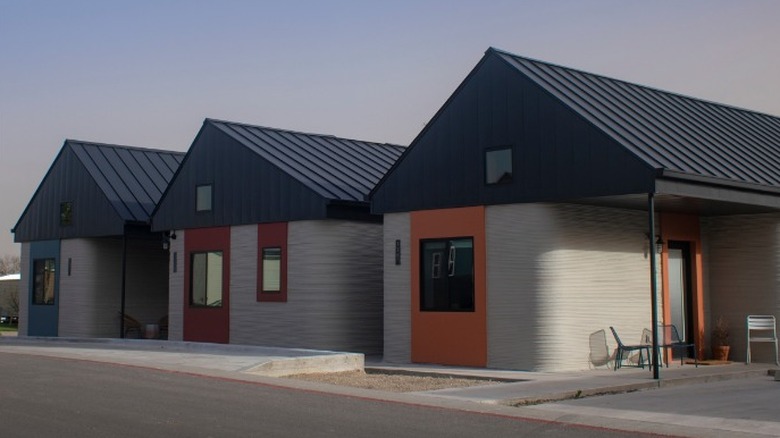
While the housing needs in the U.S. are acute and genuine, needs in other parts of the world are often dire. The lack of decent and affordable housing often leads to vast slums with unsanitary living conditions. Non-profit charity New Story has been working to provide housing to people in Central America, having built 150 homes in El Salvador over the past few years, according to Wired. Having raised the money to build 1,300 homes over the last few years and completing 850 already, COO Alexandria Lafci wanted to see if there was a better way to make this happen faster and help more people. Then she found Icon.
New Story is now working with Icon to bring its technology to the developing world. The 350 sq. ft. house already built is a prototype house for what want to start building in Latin America. Current houses take eight months and cost about $6,000, and Icon wants to get that cost down to $4,000 with a construction time of less than a week. Perhaps the biggest challenge is the logistics of moving this enormous equipment to places with poor infrastructure and extreme climates. With some success now, this could become life-changing to vulnerable communities all over the globe.
Printed homes can be sustainable
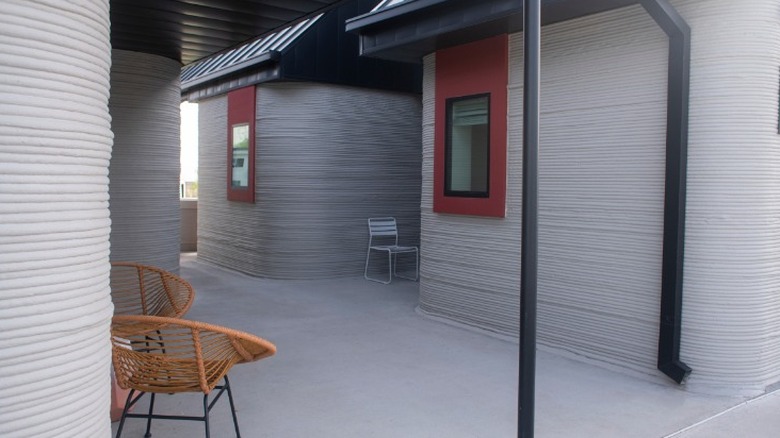
Home construction has a dramatic impact on the environment. From the clearing of forests for lumber to the carbon emissions from diesel and gas-powered equipment, construction has an ecological cost. 3D-printed homes help to reduce this by building from mostly sustainable concrete and consuming less fuel in the process, creating fewer emissions. 3D printing also produces a lot less waste, as building construction produces millions of tons of waste sent to landfills each year. While these benefits are real and tangible, they can get better by using all-natural or recycled materials.
Azure is a company looking for alternative ways to print new homes. Its process uses recycled plastic for its printer, and the source material is largely water bottles and food packaging. Rather than printing a home onsite, Azure is creating pre-fabricated pieces in its warehouse and shipping them for assembly on-site. Current offerings are for small structures meant as extra spaces to be placed in a backyard, but plans for complete dwellings are in the works (via Bob Vila).
Taking sustainability a step further, an Italian architect has created plans for printing structures using clay from natural materials nearby. A firm has already been contracted to implement the design and build test structures to prove the concept works (via My Modern Met). 3D printing alternatives are just now being explored and more innovative building materials are surely still to come.
Printed homes can resist natural disaters
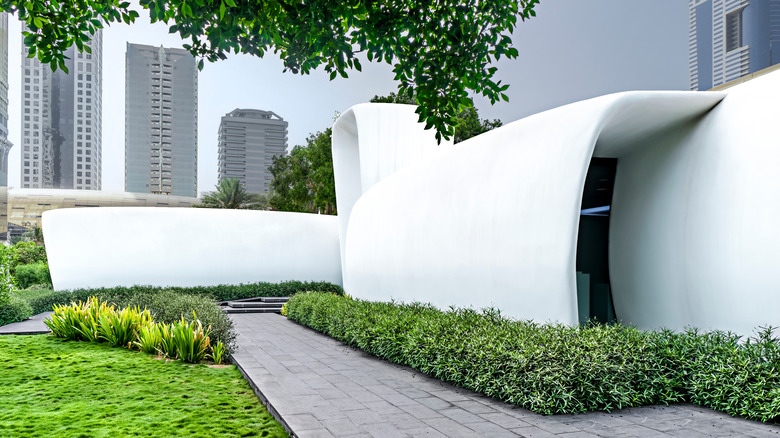
The printed homes using concrete are not just fast and affordable to build, but they are also strong. Concrete is one of the strongest and most resilient building materials we have at our disposal today. It is also durable and long-lasting and structures made from concrete will last for decades with little to no maintenance. This is also what makes homes printed of concrete perfect for areas known for extreme weather.
Houston Chronicle reported about the development of printed homes in the area as Houstonians are all too aware of the impacts of hurricanes, having suffered through the devastation of Harvey in 2017. Icon is also working in its home state to build a set of five homes near the Gulf Coast designed to withstand a Category 5 hurricane. Icon's CEO takes this project personally as he had once spent a Christmas in a FEMA trailer and lost his family home, the Chronicle notes. Concrete structures can withstand the forces of hurricane winds, but they also prevent mold growth and flooding, making them ideal for use on the Gulf Coast and other areas prone to extreme weather events.
Design is not limited
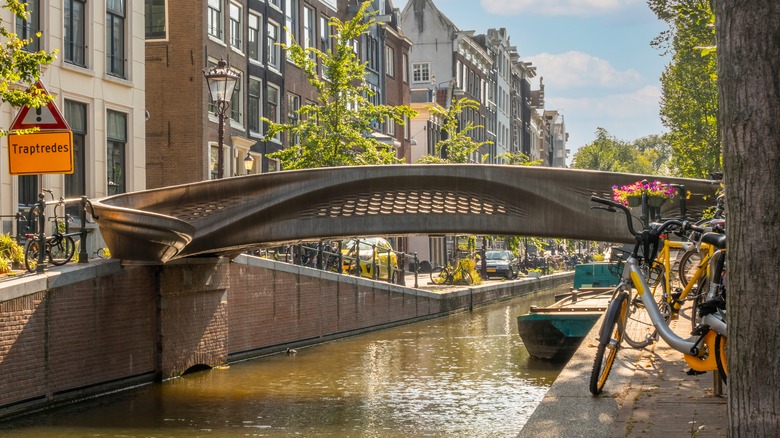
Traditionally built homes often have a traditional look for good reasons. The materials available and the contractors experienced enough to build homes both work within well-established home designs. Creating avant-garde architecture is possible, but pricey. Using squares and rectangles and plenty of right angles makes homes easier and faster to construct and when curves and slants or other shapes enter the plans, costs rise dramatically. However, with a 3D printer, those constraints evaporate.
With a 3D printer, houses can be built in almost any shape or form you can imagine. Curves and odd angles for walls are no problem and take no more time than a big square. This leaves much room for the imagination of designers. Yanko Design writes about the broad array of designs created already, noting the unique attributes. It features a steel-printed bridge in Amsterdam featuring flowing shapes and repeating lattice on the sides; a cantilevered home of large box-like structures stacked to form a house in San Sebastian, Spain; and another Amsterdam project to build traditional-style canal houses from recycled plastic that has already begun construction. Arch Daily examines the unconstrained digital nature of the printing process that allows for dynamic design creations that can be plotted on computers long before any construction begins. The evidence of initial projects being completed around the globe is evidence that this construction method is viable and growing.
The Future of home construction
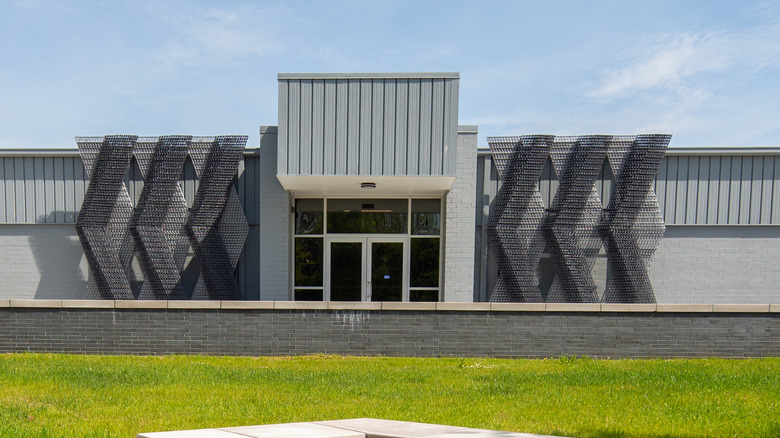
The promises of 3D printing are enticing. The ability to quickly and affordably build homes on a grand scale appears to be the future of home construction. But what does the future hold for the millions of contractors working in this industry across the country and across the world? The possibilities for cost and time savings are incredible, and the ability to explore creative designs is equally intriguing. So what sort of roadblocks or difficulties lie ahead for the printed home construction industry?
An opinion piece from Architizer posits some detrimental qualities of the printed structure. To highlight a few, officials in Dubai want to create a hub of 3D printing in their city and for it to be a center of innovation in the industry. They have some clever offices printed already, but, in a city of gleaming skyscrapers, printed structures are presently limited to just a couple of stories and huge hurdles must be overcome to build anything like a skyscraper. The tendency for printed walls to take on a cave-like aesthetic could also be a turn-off for buyers who are accustomed to typical plaster or sheetrock-finished walls.
Despite some objections to the adoption of 3D printing in home construction, opportunities abound. The only thing that would truly hold it back is a lack of creativity in problem-solving and irrational fear of change. If people will embrace the future and see the benefits of new approaches, 3D printers could be as common on home sites as carpenters.
Recommend
About Joyk
Aggregate valuable and interesting links.
Joyk means Joy of geeK